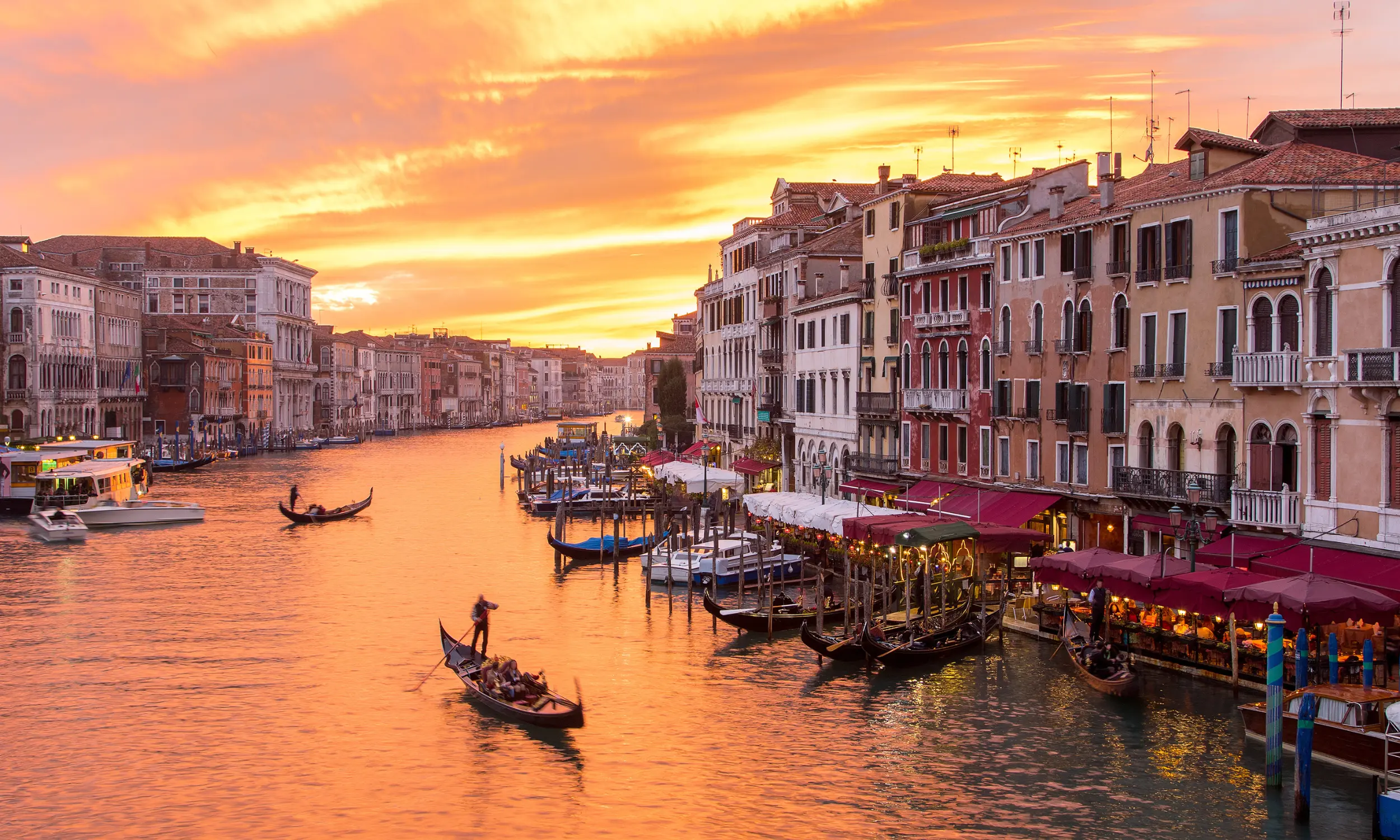The Cruise Tourism Industry of 2024 - Trends & Outlook for the Future

The cruise tourism industry, a vital component of global tourism, has charted a course through turbulent waters over recent years. In 2024, it stands stronger than ever, propelled by innovation, resilience, and an unwavering commitment to offering unforgettable experiences on the high seas.
This year’s State of the Cruise Travel Industry Report by the Cruise Lines International Association (CLIA) illuminates this dynamic industry’s current state and prospects.
A Surge in Passenger Volume
The past few years have seen a remarkable resurgence in the cruise industry. In 2023, the industry experienced a significant uptick, with 31.7 million passengers boarding cruises—surpassing 2019 figures by 7%.
This surge is particularly noteworthy given the context of a 50% increase in passengers sailing in 2023 compared to 2022. This robust growth has revitalized the industry and generated a staggering $155 billion global economic output, originally achieved in 2019 when 29.7 million passengers cruised.
Let’s take a look at some key trends and data to provide a more comprehensive view:
Small Cruise Ships and Expedition Cruises
Over the past few years, several cruise lines have launched small ships that resemble personal yachts more than traditional cruise vessels. These ships prioritize luxury, personalized spaces, and exceptional service.
One notable cruise ship trend in this niche market is the emphasis on unique and immersive experiences. Unlike larger cruise ships that focus on a wide range of amenities and entertainment options, these smaller, yacht-like vessels offer curated excursions and intimate onboard activities that cater to the specific interests of their guests.
For instance, the Emerald Azzurra debuted in 2022 and was named the Best New Luxury Ship by Cruise Critic. Expedition cruises have also gained popularity. These bucket-list trips take passengers to destinations perfectly suited for expedition vessels, including the Arctic, Antarctic, Alaska, South and Central America, Iceland, Greenland, and Canada.
Last-Minute Deals
While conventional wisdom suggests that booking early secures the best fares, last-minute deals are increasingly enticing in cruise tourism. Cruise lines, including mainstream, river, luxury, and expedition operators, offer incentives and perks for close-to-departure sailings. The Cruise Critic deal tracker tool highlights these frequent last-minute offers, which can add significant value to your cruise experience.
Global Passenger Count
According to the Cruise Lines International Association (CLIA), cruise tourism rebounded faster than international tourism. In 2023, the global passenger count reached 106% of 2019 levels, totaling 31.7 million passengers.
This impressive recovery can be attributed to several factors, including enhanced health and safety protocols that have restored consumer confidence, as well as pent-up demand from travelers who had postponed their cruise plans during the pandemic.
This surpasses the pre-pandemic figure of 29.7 million passengers in 2019. Notably, the industry experienced a remarkable post-pandemic rebound, with 2 million more people cruising in 2023 compared to 2019, representing a 7% increase.
People also read: The Complete Guide To Online Travel Agencies

Expansion and Evolution of Fleet Size and Composition
The fleet of CLIA-member cruise lines, which represents approximately 95% of global ocean-going lower berths, is experiencing managed growth and diversification. In 2024, for the first time, the fleet exceeded 300 ocean-going vessels, signaling a milestone in the industry’s expansion. This growth trajectory is expected to continue, with projections indicating 745,000 lower berths by 2028.
Cruise Industry Evolution: A Brief Overview
The cruise industry has come a long way from its humble beginnings. Originally born out of necessity, cruise ships were the primary means of trans-continental passage in the early 1800s. They transported cargo and ferried immigrants across the Atlantic, but conditions were far from glamorous.
Fast-forward to today, and cruise tourism has become a luxurious experience. Modern cruise lines prioritize passenger comfort, entertainment, and innovative amenities. From 4D movies to molecularly enhanced cocktails, passengers can now enjoy various activities while sailing the high seas.
The rise of themed cruises has also contributed to the industry’s appeal, offering specialized voyages that cater to niche interests such as culinary adventures, wellness retreats, and music festivals. These themed cruises provide immersive experiences that go beyond traditional sightseeing, allowing passengers to indulge in their passions while connecting with like-minded travelers. This diversification in cruise offerings has been instrumental in attracting a broader and more diverse customer base.
The industry has rebounded remarkably, with an expected 35.7 million cruise passengers in 2024—a 6% increase compared to 2019. And guess what? Millennials are leading the charge, showing the most enthusiasm for future cruising.
Fun Fact: While most travelers don’t dwell on the possibility of death during their vacation, cruise ships are prepared for such unfortunate events. By law, all cruise liners must have body bags onboard and maintain morgues. These facilities house the deceased until the ship reaches the nearest port, where repatriation can occur according to the docking nation’s laws. The discreetly named “Operation Rising Star” signals the passing of a passenger, ensuring respectful handling during the voyage.

Fleet Composition Insights
The composition of the fleet provides intriguing insights into the industry’s strategic direction:
- Up to 1000 Lower Berths (LB): 20%
- 1000 to 3000 LB: 57%
- 3000 Plus LB: 24%
These segments represent the projected distribution of ships by vessel count in the CLIA fleet by lower berth capacity, reflecting a balanced approach catering to various market segments and passenger preferences.
Fun Fact: Royal Caribbean’s “Oasis” class ships fall into the 3000 Plus LB category. These floating marvels—like Symphony of the Seas and Harmony of the Seas—feature Central Park, ice-skating rinks, zip lines, and even a full-size carousel. They’re like mini-cities on water!
Anticipated Ship Releases in 2024
Several exciting new vessels are set to join the fleet in 2024, each bringing unique features and innovations:
- Disney Treasure (Disney Cruise Line, 2500 LBs):
- Disney Cruise Line continues to enchant passengers with its family-friendly experiences. Expect magical entertainment, character meet-and-greets, and themed dining aboard the Disney Treasure.
- Mein Schiff 7 (TUI Cruises, 2900 LBs):
- TUI Cruises caters to German-speaking travelers. Mein Schiff 7 will likely offer a blend of relaxation, wellness, and gourmet dining, all while exploring picturesque destinations.
- Utopia of the Seas (Royal Caribbean International, 5714 LBs):
- Royal Caribbean’s Utopia of the Seas is a mega-ship pushing the boundaries of onboard entertainment. Think Broadway shows, zip lines, rock climbing walls, and a Central Park-inspired oasis.
- Explora II (Explora Journeys, 922 LBs):
- Explora Journeys aims for intimate luxury. Explora II will likely focus on immersive itineraries, cultural experiences, and personalized service.
- Silver Ray (Silversea Cruises, 728 LBs):
- Silversea Cruises caters to discerning travelers. Silver Ray promises all-suite accommodations, gourmet dining, and enriching shore excursions.
- Queen Anne (Cunard Line, 3000 LBs):
- Cunard Line is synonymous with classic elegance. Queen Anne will likely offer refined British traditions, formal evenings, and transatlantic crossings.
- Brilliant Lady (Sun Princess, Princess Cruises, 2770 LBs):
- Princess Cruises’ Brilliant Lady may focus on diverse itineraries from Alaska to the South Pacific. Expect a mix of relaxation and adventure.
- Virgin Voyages (4300 LBs):
- Richard Branson’s Virgin Voyages aims for a fresh approach. Expect trendy design, adults-only experiences, and innovative dining concepts.
Notably, all eight ships are crafted in Europe, with four built in Italy alone. These vessels are equipped with advanced technologies such as Advanced Wastewater Treatment Systems (AWTS), Shore Side Electricity/Onshore Power Supply (SSE/OPS) capabilities, and some are powered by Liquefied Natural Gas (LNG), showcasing the industry’s commitment to sustainability and innovation.

Orderbook Trends and Future Outlook
The orderbook, which tracks the number of ships on order, has fluctuated over the years. While the number of ships in the orderbook in 2024 is less than half of the peak observed in 2019, the industry remains optimistic. This managed approach to growth ensures that new vessels entering the market meet evolving consumer demands and sustainability standards.
Fun fact: Did you know that some cruise ships have their zip codes? It’s true! These floating cities are so massive that they’ve been assigned unique postal codes to handle mail and packages sent to passengers and crew members onboard. Imagine receiving a postcard with a cruise ship’s zip code—talk about a one-of-a-kind address!
Cruise Demand Across Regions
As per the stats, 84% of previous cruisers plan to cruise again, which underscores the enduring allure of cruise travel vacations. Once someone experiences the magic of sailing the open seas, they often become repeat customers. This high intent to cruise again speaks to the industry’s ability to create memorable experiences—from onboard entertainment and gourmet dining to exploring exotic destinations. It’s like catching the travel bug but with a nautical twist!
Gen-X and Millennials are at the forefront of cruise holiday planning. Their interest in cruising reflects changing preferences—seeking adventure, cultural immersion, and unique experiences. These younger generations appreciate the convenience of unpacking once and exploring multiple destinations. They’re also drawn to themed cruises, wellness offerings, and tech-enhanced amenities.
Fun Fact: Did you know that some cruise ships now feature robotic bartenders? Passengers can place drink orders via touchscreens; the robots mix and serve the perfect cocktail. It’s a blend of cutting-edge technology and mixology—Cheers to that!
Setting Sail into the Future
The cruise industry is not just recovering but thriving. With growing fleet sizes, the introduction of cutting-edge ships, and a strong intent to cruise among travelers, the horizon looks promising. Whether it’s luxurious experiences, adventurous oceanic adventures, or exploring new and exotic destinations, the cruise industry continues to set sail with optimism and innovation. As we navigate the waters of 2024, the spirit of exploration and the joy of cruising remains undiminished, promising a bright future for this vibrant sector.

Conclusion
The state of the cruise industry in 2024 reflects a blend of resilience, innovation, and strategic growth. The industry’s ability to rebound and surpass pre-pandemic passenger volumes is a testament to its enduring appeal and adaptability.
At Custom Travel Solutions, we give our clients’ members access to more than 45,000+ cruise itineraries from 27 different brands, including:
- Amadeus River Cruises
- AmaWaterways
- American Cruise Lines
- APT
- Avalon Waterways
- Azamara
- Carnival Cruise Line
- Celebrity Cruises
- Costa Cruises
- Crystal
- Cunard
- Disney Cruise Line
- Explora Journeys
- Holland America
- MSC Cruises
- Norwegian Cruise Line
- Oceania Cruises
- Princess
- Regent Seven Seas
- Royal Caribbean
- Seabourn
- Silversea
- Travelmarvel
- Viking Expeditions
- Viking Ocean
- Viking River
- Virgin Voyages
- Windstar
Technological advancements have revolutionized the onboard experience, making cruises more appealing than ever. From smart cabins with personalized settings to high-speed internet that keeps passengers connected, technology enhances comfort and convenience.
Augmented reality excursions and interactive onboard entertainment provide unique and engaging experiences that cater to the tech-savvy traveler.
With a focus on sustainability, technological advancements, and catering to a diverse demographic, the cruise travel industry is well-positioned to navigate future challenges and seize new opportunities. As we look ahead, the allure of the open sea continues to captivate travelers worldwide, ensuring that the magic of cruising endures for generations to come.




